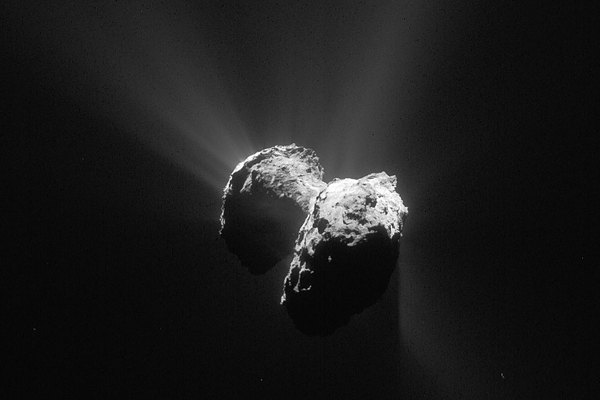The odds of impact are low, but the stakes couldn’t be higher
Astronomers estimated that on March 23, a comet would fly closer to the Earth than any comet since 1770.
But Vishnu Reddy, a research scientist at the Arizona-based Planetary Science Institute, made his observations using NASA’s infrared telescope in Hawai’i two weeks before the expected pass.
“I kind of had a hunch that, ‘What if we get bad weather?'” Dr. Reddy says. “On the 23rd, as predicted, it got clouded out completely, so I was really fortunate to get those observations.”
Reddy’s hunch not only advanced academic understanding of comets and the universe, but it also aided NASA’s goal of tracking and analyzing objects with the potential to impact Earth.
“One of the threats we always have to worry about when we study these comets is the threat they pose to life on Earth,” Reddy says. “It’s important because if something is going to impact the earth, we want to know what it is made of.”
He says Comet Pan-STARRS P/2016 BA14 was large, probably between 0.4 miles and 0.75 miles in diameter, but easier to study than most comets because so much of its atmosphere and iconic tail had burnt out. It was also remarkably bright in the infrared spectrum, with a reflective ability similar to fresh asphalt, according to a press release.
Astronomers at NASA’s Jet Propulsion Laboratory in Pasadena, Calif., noticed the comet’s shape was pear-like on one side and slanted like a brick on the other, with ridges and plains, according to a NASA release. These observations could help NASA track objects in the solar system that look like asteroids, but could actually be “comets in disguise” – dead comets with tails that are no longer visible.
“If a comet or a fragment of a comet were to impact the Earth it would have a completely different effect on the Earth compared to a stony asteroid,” Reddy says.
With these questions in mind, NASA began allocating resources for tracking near-earth objects and space rocks in 2010. The program for tracking asteroids received just $4 million at first, then $20.4 million in 2012, and $40 million by 2014, according to a NASA statement. In 2016, the budget provided $50 million to establish a Planetary Defense Coordination Office.
The odds of impact are low, but the stakes couldn’t be higher. Even crossing the orbital path of a massive comet could damage the Earth, astronomers from Armagh Observatory said at the Royal Astronomical Society in December, although they do not believe this is likely in the next 40,000 years.
“The effects of running through the debris trail of a large comet are liable to be complex,” the authors wrote in the study.
This comet’s orbit reached a point 2.2 million miles from Earth, and it was the third-closest comet in recorded history, so the odds of comet-Earth impact are low.
“There is a growing choir of concern regarding Near Earth Objects, or NEOs – spotting them and dealing with any Earth-threatening gatecrashers,” Leonard David wrote for Space.com. “While the annual probability of the Earth being struck by a huge asteroid or comet is small, the consequences of such a collision are so calamitous that it is prudent to appraise the nature of the threat and prepare to deal with it.”
Source: The CS Monitor

































Leave a Comment
You must be logged in to post a comment.